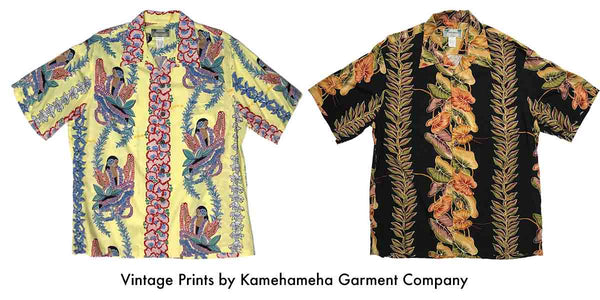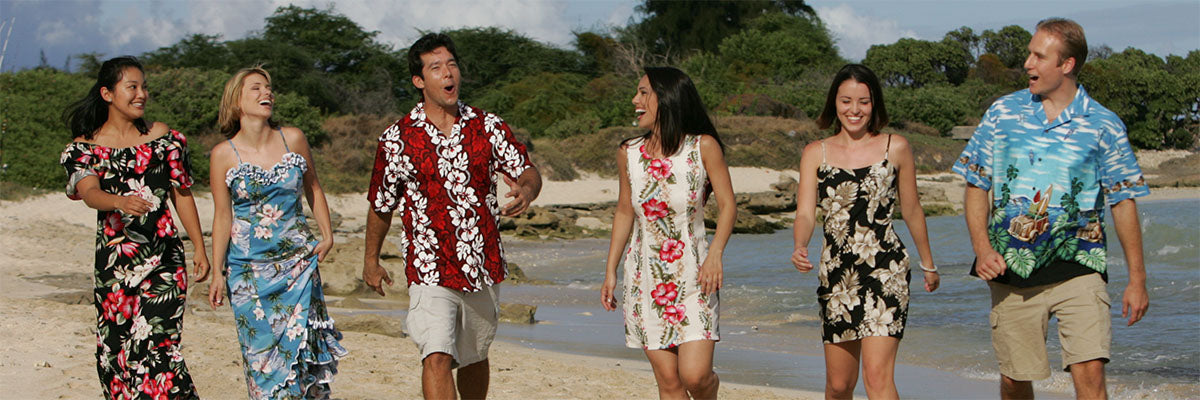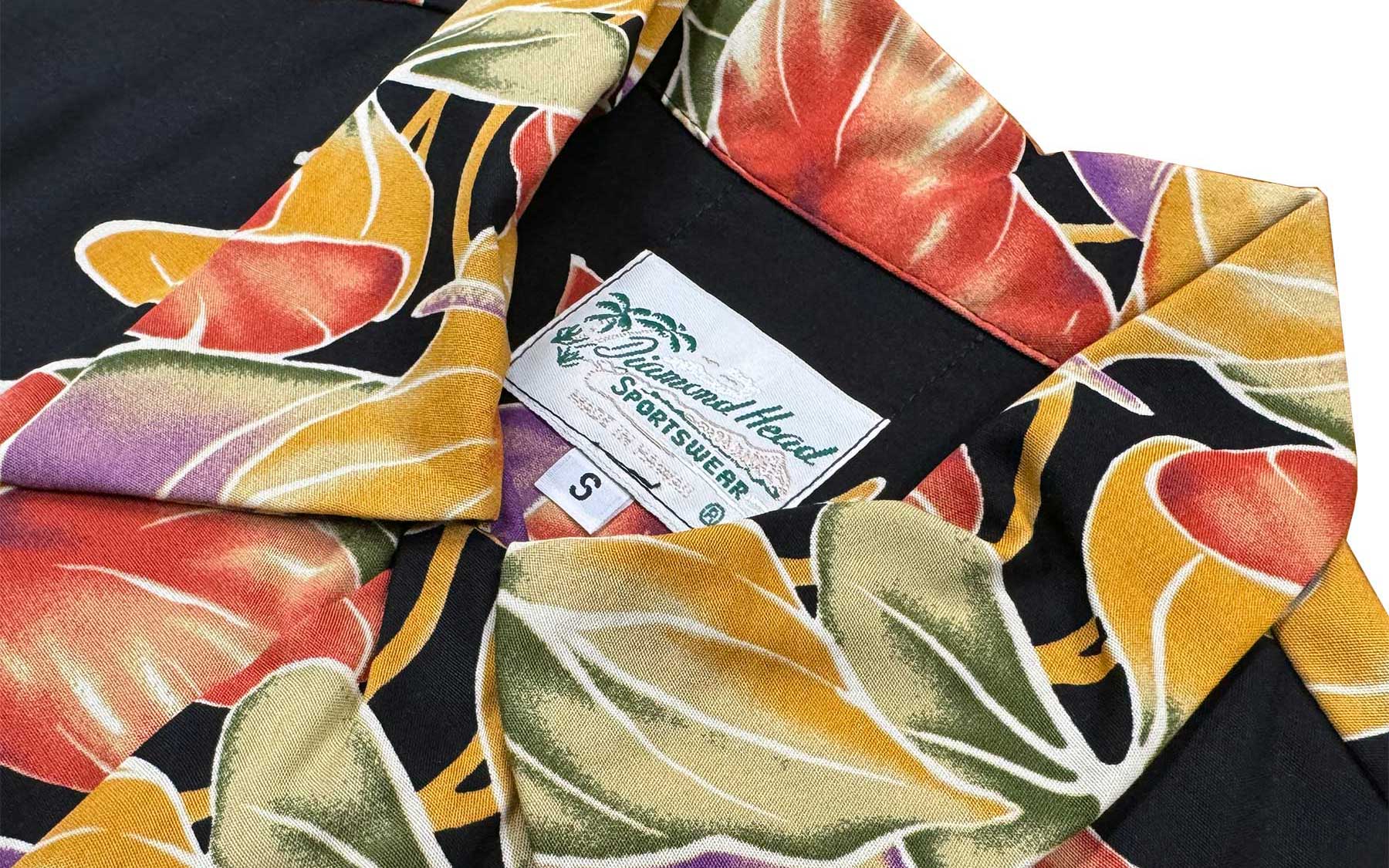History of the Hawaiian Shirt

The Hawaiian shirt (more commonly referred to as an "Aloha shirt" in Hawaii) is an international symbol of Hawaii that has come to be recognized around the world. What began as a simple floral print shirt has taken on a life of its own, evolving over the decades to what we recognize today as the Hawaiian shirt. From its humble beginnings in the 1930s, Hawaiian shirt trends have evolved just like other fashion trends. There are several types of Hawaiian shirts as well as other Hawaiian clothing. Here are some interesting facts you might not know about the history of Aloha shirts from Aloha FunWear, your very own Hawaiian shirt Wiki.
EARLY HAWAIIAN WEAR
Before the arrival of woven fabrics from China, Japan and the West, native Hawaiians created their clothing from native plants and trees. Men wore a malo, or loin cloth, made of tapa cloth, which was fabricated from the inner bark of wauke trees. As you can imagine, that type of material had a much different look and feel than the rayon or cotton that modern Hawaiian shirts are usually made of. Traditional Hawaiian women wore a skirt called a pa`u, which looked like a hula skirt. We still see representations of this type of skirt today in novelty stores or at Hawaiian luaus.
A TAPA FOR ALL OCCASIONS
Tapa material was tough, durable and versatile. It was great for clothing and made an excellent floor covering. Because it was made from plants and had a relatively flat surface, it was also easy to decorate. Throughout Polynesia, tapa cloth was the artist's canvas and people hand-painted their tapa creations with beautiful colors and exquisite designs, drawing inspiration from the world around them. Plant life, particularly tropical flowers and lush green leaves, were commonly represented in tapa cloth. The brilliant, colored patterns on today's Hawaiian shirts and dresses find their roots in these wonderful Polynesian tapa prints.
THE EVER POPULAR PALAKA SHIRT

In the late 19th and early 20th centuries, the Hawaiian Islands emerged as a powerful plantation economy that produced sugar, pineapple and coffee for export around the world. Plantation workers needed a rugged shirt that was suitable for hard labor in the fieldsand the hot, often unpredictable weather of Hawaii. Within a generation, the checkered blue and white denim palaka became the standard work shirt of Hawaii. By the early 1930s,the palaka Hawaiian shirts and blue denim trousers called sailor-mokus originally donned by field workers had almost become the official national costume of Hawaii both on and off the plantation.
FROM KIMONO TO ONO
In the early days of fashion, shirts were tailored by hand. This could take place either in the home or at custom tailor shops. These shops quickly sprung up all over the islands, particularly in plantation towns and throughout Honolulu. Dry goods stores supplied newly available fabrics from around the world, including printed silk from Japan, raw silk, batik and rayon from the U.S. mainland and cotton cloth made for kimonos and yukatas. Asian immigrants had long played a role in Hawaiian history, and fashion styles reflected this. Short- and long-sleeved shirts and women's dresses were based on Asian garment designs and made from pre-printed fabrics from China and Japan. These colorful shirts and dresses were the direct ancestors of modern Aloha wear. Here in the islands we say "ono" to mean deliciously cool.
FIRST REAL HAWAIIAN DESIGNS
It wasn't until the mid-1930s that Hawaiian clothing manufacturers decided to produce cloth that was uniquely Hawaiian in design. Watumull's East India Store led the way by commissioning artist Elsie Das to create fifteen floral designs, leading the way to what we now recognize as a Hawaiian print. Her beautiful hand-painted designs were sent to Japan where they were printed by hand onto raw silk and turned into clothing.
SATIN MISTAKES AND HOLLYWOOD DREAMS
According to Hawaiian fabric designer Elsie Das, a Japanese manufacturer once printed a set of her floral designs on heavy satin by mistake. "These started a vogue in Hollywood. Ginger Rogers, Janet Gaynor and other stars bought bolts of the stuff and had it made into 'seductive gowns.' The result was an epidemic of Hawaiian designs, with hibiscus and ginger breaking out on table cloths, napkins and scarves all over the country." "Elsie Das, Artist Designer," an article by William Davenport in Paradise of the Pacific, p 9, 1963.
THE "FIRST" ALOHA SHIRT

The term "Aloha shirt" may have started as street slang in the early 1930s to describe the growing number of shirts featuring Oriental and Hawaiian designs that were being produced by Honolulu tailors. Musa-Shiya, the Shirtmaker first advertised the "Aloha shirt" in the Honolulu Advertiser on June 28, 1935: "Honolulu's Noted Shirt Maker and Kimono Shop. 'Aloha' shirts - well tailored, beautiful designs and radiant colors. Ready-made or made to order 95 cents up." By another account, an advertising salesperson from the Honolulu Advertiser and Ellery Chun, the owner of the King-Smith dry goods store, first coined the term "Aloha shirt." In fact, Mr. Chun officially registered a trademark for his Aloha sportswear on July 15, 1936.
HAWAIIAN SHIRTS IN HOLLYWOOD

Like all great trends, Hollywood had to get involved. Movie stars, crooners and politicians did a fine job of promoting Hawaiian clothing, bringing the colorful designs into the mainstream. Montgomery Cliff Burt Lancaster, Ernest Borgnine and Frank Sinatra all wore beautiful Hawaiian shirts in the movie From Here to Eternity. Ginger Rogers wore seductive satin gowns of Hawaiian designs while Bing Crosby sported his unique combination of Hawaiian shirt and porkpie hat. And Betty Grable did a promo pin-up shot wearing a gorgeous Hawaiian-style swimsuit in the 1940s. In the 1980s, Tom Selleck often wore the signature "Magnum P.I." Hawaiian shirt, which is now in the Smithsonian Museum of American History. Other stars and cultural icons like Elvis Presley and Jimmy Buffet also helped to propel Hawaiian shirts into mainstream fashion.
BORDER HAWAIIAN SHIRTS

Border Hawaiian shirts had a special degree of symmetry that made them particularly attractive. By modern standards, border Hawaiian shirts were a luxury because so much fabric was wasted in making them. The shirts featured wonderful designs that were so well thought-out that sleeves, sides and hems were identical. Pockets sometimes matched the shirt pattern perfectly. And some designs never repeated themselves on the same shirt. Border Hawaiian shirts tended to be longer to show off the fabric images (why you should not tuck in a bottom design shirt). The same tailoring approach was used to create beautiful sundresses. The border shirt is very similar to the engineered print Hawaiian shirt with the only difference being that the engineered shirts' images are even wider, often stretching from seam to seam.
MUUMUUS AND TEA-TIMERS

The Hawaiian muumuu started out as a loose-fitting dress designed for women of all sizes. It was the result of missionaries who sought to cover the bodies of Hawaiian women, who traditionally wore nothing more than a skirt. Muumuus were easy to make and fit a wide range of wearers, making them ideal for giving away to the islands’natives. They soon became a part of Hawaiian history and labeled a traditional garment. As the muumuu morphed and mixed with traditional Asian designs, a unique series of women's garments emerged.
For informal entertaining, the pake muu featured long, wing-like sleeves based on a Chinese design. The popular tea-timer was a tight-fitting, tailored sleeveless top with a short mandarin collar. The holomu was a fitted garment for more formal evening wear while the holoku was a full-length dress for formal affairs. Over the years, women's Hawaiian clothing has tended to feature floral designs: ginger blossoms, plumeria, hibiscus, orchids and birds-of-paradise.The designs used on women’s clothing often matches the prints used in Aloha shirts.
CASUAL DAY FINDS ITS ROOTS IN HONOLULU
In 1947, the Honolulu Board of Supervisors passed a resolution whereby City and County employees were allowed—actually, they were encouraged—to wear Hawaiian shirts from June 1 to October 31 each year to beat the summer heat and promote Hawaiian pride. This single act by a local government has had a powerful influence on businesses and civil servant departments around the world, especially where summers are unbearably hot. Today, many corners of the globe adopt more casual clothing styles for hot weather. The tradition of “casual Friday” stems from this simple Hawaiian practice.
ALOHA FRIDAY

In Hawaii, every Friday is Aloha Friday. It's the day when you wear your favorite Aloha dress or Aloha shirt with pride. On each and every Friday, downtown Honolulu is a sea of Aloha wear, especially at lunch time when you can sometimes catch a free concert in the plaza at the corner of King and Bishop streets. Hawaii's Aloha spirit can be found in many business offices. Companies that offer a "casual" day on Fridays need only look to the Aloha State for the source of this wonderful tradition.
ALOHA WEEK
The first annual Aloha Week festival was held in 1947. By 1948's celebration, the local residents were enthusiastically wearing Hawaiian shirts and dresses to help promote local products. The Hawaiian shirt soon became a symbol of Hawaiian industry and pride. Even today, after more than 50 years, Aloha Week is still going strong throughout the islands. It's a great excuse to dress up in your favorite Aloha wear, enjoy "ono Hawaiian kine grinds" (local cuisine), and immerse yourself in the music and arts of the islands.
CRUISIN’
Among several luxury cruise ship companies that promoted travel to exotic Hawaii, the Matson Line commissioned artists to create enchanting Hawaiian images for use as menu covers. Some of these distinctive images were used for fabric designs on Hawaiian shirts and dresses.Cruise culture embodies everything about the Aloha spirit, so the two were a natural match.
MADE IN HAWAII
In the 1950s, manufacturers began adding the magical phrase "Made in Hawaii" to their Aloha print garment labels. (The idea allegedly came from a trade commissioner from Los Angeles during a visit to Hawaii in 1950.) This new label increased the value and desirability of authentic Hawaiian shirts and dresses on the mainland and across the world. "Made in Hawaii" allowed true Aloha wear to stand out in a market that was being flooded by cheap imitations and mail order garments.
Today, Aloha wear or Hawaiian shirts remain popular choices for tourists, Hawaiian natives and anyone that wishes to partake in the island life wherever they are. The colorful shirts feature bold colors, complex patterns and tropical prints reminiscent of Hawaiian life. If you're in the market for a new Hawaiian shirt, dress or other type of Aloha wear, visit Aloha FunWear to see latest styles and order a piece of the islands for yourself.




